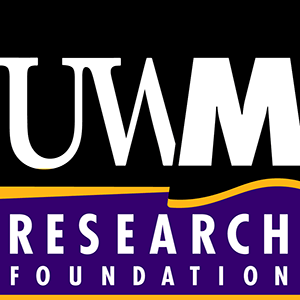
OTT1389
Technology
This invention involves a method for high-performance ion detection in water using graphene. The graphene-based device shows good electronic stability, low detection limit, and high sensitivity for real-time detection of ions or other contaminants in a water environment. The use of an aluminum oxide insulation or other passivation layer was designed for the electronic stability of the reduced graphene oxide-based FET sensors in an aqueous environment. Handheld units and standalone sensors are being designed to integrate with existing water equipment.
Current detection methods for aqueous heavy metal ions are often too expensive or unsuitable for in-situ and real-time detection. The economics of monitoring heavy metal ions in water is a key; excessive test preparations, reliance on laboratory frameworks, frequent maintenance, and calibration have a significant negative impact on the management and assurance of safe water integrity. Conventional methods used to detect heavy metal ion concentrations in a water environment include spectroscopic methods, e.g., atomic absorption spectroscopy and atomic fluorescence spectroscopy (AFS), and electrochemical methods, e.g., stripping voltammetry. These methods are unsuitable for on-site use due to difficulties such as high cost and equipment immobility. Fixed laboratory assays can accurately measure mercury and arsenic in ppb, but they are expensive to operate and maintain. Relatively inexpensive field detection methods have also been used for mercury and arsenic ion detection with a lower sensitivity. Our technology provides both the sensitivity and low cost needed for both residential and industrial monitoring of water quality.
Features/Benefits
- Multiple Contaminants – Sensors designed for heavy metal and bacterial contaminants
- Stable – The passivation layer stabilizes the sensor in a liquid environment
- Sensitive – Can detect Hg and Pb at 0.2 ppb and 1nM
- Versatile – Appropriate for use both in residential and industrial settings
Intellectual Property
PCT/US2015/043449. This technology is part of an active and ongoing research program and is seeking partners for development of the final product. It is available for developmental research support/licensing under nonexclusive terms.
Markets
The global market for Water Analysis Instrumentation is projected to reach US$3.6 billion by 2020, driven by the ubiquity of water testing for residential, commercial, and industrial uses.
Supply of clean and safe water has been a major challenge confronted by both municipal organizations and industries. Rapid growth in population and industrialization has led to significant contamination of water resources thus aggravating water shortage issues. Water analysis is critical in residential, commercial, and industrial sectors. Demand for water analysis instruments is supported by the growing levels of water contamination and the resulting legislation of stringent water quality control regulations.
These instruments find applications in monitoring industrial effluents, wastewater and in testing the quality of drinking water.
As stated by the new market research report on Water Analysis Instrumentation, Europe represents the largest market worldwide. Asia-Pacific is forecast to emerge as the fastest growing market with a CAGR of 12.9% over the analysis period. Growth in the region is led by rising environmental concerns, penalty driven enforcement of water regulations, growing population and the need for safe drinking water, and the rise in the number of certified laboratories for analysis of drinking water contaminants.
www.prweb.com
Publications
Chang et al. 2015. Real-time detection of mercury ions in water using a reduced graphene oxide/DNA field-effect transistor with assistance of a passivation layer. Sensing and Bio-Sensing Research. 5: 97-104.
Inventor (s)
Junhong Chen PhD
Dr. Junhong Chen is a Professor of Mechanical Engineering and Materials Science and Engineering at UW-Milwaukee. His research focuses on nano particle synthesis, assembly, and nano-fabrication, specifically in the area of carbon nano tubes and hybrid nano materials. The materials developed in Dr. Chen’s lab are characterized and have been applied to applications including nano structure-based gas sensors, biosensors, lithium-ion batteries, supercapacitors, solar cells, liquid sensors, and water treatment. Dr. Chen is the director of both the NSF I/UCRC on Water Equipment and Policy and the Laboratory of Nanotechnology for Sustainable Energy and Environment.

